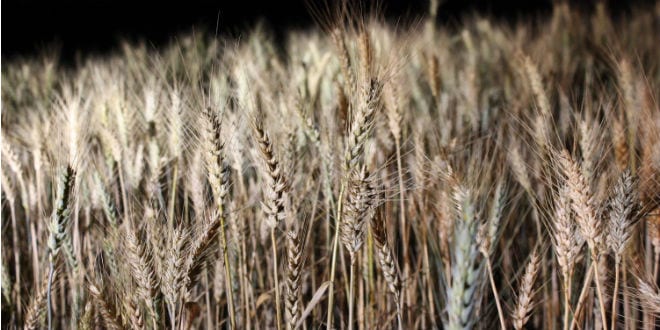On Saturday night, while most of Israel was cleaning up from the Seder ritual, a few families went out to the fields near Ruhama in the Negev to harvest the barley to be used in the Omer wave offering.
Normally, the barley for the Omer is harvested directly after Passover ends. The sheaves of grain were brought to Jerusalem where it was beaten, the chaff removed, and sifted through 13 sieves. Finally, the grains were roasted and ground into a coarse meal. Olive oil, specially prepared for temple use, was added, along with frankincense.

The preparation of the grain is usually done outside in an area as close to the Temple Mount as the authorities permit but an unseasonably heavy rain prohibited this. The preparation of the grain was performed by Rabbi Baruch Kahane who frequently serves in the role of the head of the Kohanim (men of priestly ancestry) at Temple reenactments.
Rabbi Hillel Weiss, the spokesman for the Sanhedrin, explained that the Temple rituals, in particular, the Omer offering, were a necessary aspect of a properly functioning nation.
“The harvest brings down blessings for the grain harvest for Israel and from there the blessings go out into the world,” Weiss explained. “This is also the time when people complete the bringing of tithes and other harvest-related charities.”
Rabbi Weiss explained that tzedakah, the Hebrew word for charity, comes from the root tzedek, meaning justice.
“When the Temple is in operation, charity is not optional,” Weiss explained. “You giving sustenance to the poor is a direct result of God giving sustenance to you. This concept was central to agriculture in Israel which was integrally connected to the Temple service. As such, the proper concept of charity was lost after the Temple was destroyed and the Temple service was discontinued.”
The rabbi lamented that despite being a remarkable representation of Jewish heritage, the Temple reenactments are rejected by the Israeli public at large and frequently encounter difficulties from the government.
“Much of the resistance to the return of the Temple is due to people wanting to be free to not give what is required,” Weiss explained. “This is not to be confused with socialism which places the government in the place of God, saying that sustenance comes from the state and they take care of the poor.”
After this offering is brought, the new grain is permitted to be eaten. The leftover of the sacrifice are kept by the priest and is listed as one of the twenty-four priestly gifts.
As Passover ended, Jews began counting 50 days until the holiday of Shavuot, when two loaves made from the barley are brought to the Temple as an offering.
Source: Israel in the News

